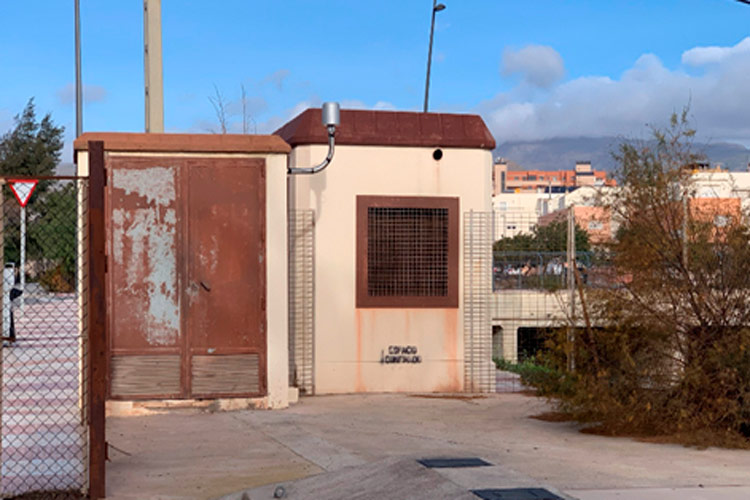Roquetas, on storm hunting to avoid flooding
Hidralia Installs three rain gauges in different areas that will allow you to know in real time the water accumulated in each area
Climate change has increased the usual strong storms in the Mediterranean, which check the water evacuation systems of cities, with frequent flooding. With this scenario, which experts say will get worse as climate disruptions progress, the use of technologies in flood prevention is becoming increasingly important and necessary.

This is the case of Roquetas de Mar, a coastal municipality that has traditionally suffered flooding and which, in addition to having built large storm tanks in recent years, is betting on technology to reduce the effects of heavy rains. One of its most important measures is the detection of storms using different systems, in order to prepare your entire evacuation network to be in optimal condition.
The concessionaire company Hidralia is in charge of these tasks through what they call the Rain Emergency Plan, which includes all the processes and systems that are available to deal with the storm episodes, starting with their detection, whose means have recently been increased with the incorporation of three more rain gauges installed in the Urbanization , Aguadulce and Roquetas Oeste.
"We use technology to be able to respond quickly and effectively to a possible flood risk emergency," explains Alvaro Islán, manager of Hidralia in Roquetas de Mar, who details that "first of all, what we are trying to do is prevent episodes of denials, for that, throughout the year we carry out preventive cleaning of the sewer network , root milling and replacement of the sections with higher structural impacts, improving the hydraulic capacity of the network as a whole".
Preventive work that is complemented by a system of alerts and weather tools to anticipate storms. "In the event that these systems warn of a high probability of precipitation, Hidralia activates a protocol of action that is detailed in the Emergency Plan," says the concessionaire's manager.
Several phases
The aforementioned Plan has several phases, each of which has different mechanisms and strategies of action with which to face the arrival of storms in the municipality. There is a phase of continuous surveillance, known as pre-emergency or pre-alertness, which is where storm early detection systems come into play.
If these detection systems are expected to occur episodes that may overwhelm the imborne network or complicate its operation, that is when the Emergency Plan is officially activated. This involves the creation of working groups and brigades prepared to go to the most conflicted places. At first these equipments carry out preventive tasks, checking the operation of the networks and performing cleanings if necessary so that the water can flow. The operation of storm tanks and pumping stations is also checked at this stage.
During the rainy episode the active device is dynamic and allows equipment deployed on the streets with material and trucks to go to those points that are considered at risk of incident or where any have occurred. To this end, the above-mentioned rain gauges, used to measure the amount of water accumulated in different areas of the municipality "to be consistent and to go to those where accumulation is most significant, prioritizing actions and being more effective in solving problems", explains Islán in this regard.
Also protagonist in this phase is the system of remote control of the network that Hidralia has in Roquetas and that allows them to monitor and receive all the information that the sensors collect in a centralized position from which everything that is going on at each point is controlled, having adequate information for decision making and equipment management.
Remote control, for example, allows to check the level or certify the operation of pumping stations remotely and in real time, facilitating immediate and remote action, as well as communicating more quickly with emergency services and Security Forces.
At the end of the rainy episode, the Plan closes with a review of all critical points in the system.
